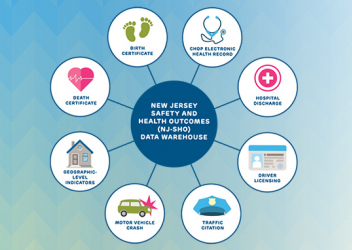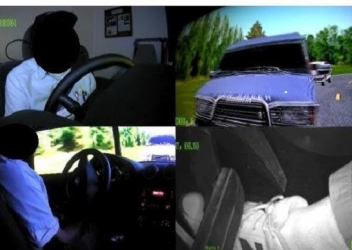Research Methods
The Center for Injury Research and Prevention (CIRP)'s multidisciplinary team uses several research methods in their work to develop interventions to reduce pediatric injury. We determine priorities for our research, the key collaborations and networks to apply that research, and provide education, training and professional development across several injury science disciplines to make the most impact.
Types of Research Methods
- Behavioral Science
Behavioral science explores the cognitive processes, especially decision-making and communication, through systematic analysis of human behavior. The Center’s behavioral scientists study how human behavior before an injury occurs can increase or decrease the risk of that injury and then develop interventions that promote safety and help to prevent injury. They also study the emotional and psychological response to potentially traumatic events, such as injury, for children and their families. Several behavioral science research methods are used: assessing people’s knowledge, attitudes, or mental health symptoms through validated questionnaires and surveys; observing behavior to better understand how people use technology or interactions amongst family members or the healthcare team; and developing evidence-based interventions to change behaviors or reduce symptoms.
Research Example: TeenDrivingPlan -- The development of TeenDrivingPlan (TDP), an interactive web-based program to help parents more effectively supervise driving practice, involved five years of formative research followed by a randomized, controlled trial of young drivers and their parent supervisors. Key TDP study results show that the intervention increases parent engagement as driving supervisors, practice variety, and parent support of teens. Young drivers that used TDP over a 24-week period were 65 percent less likely to fail a rigorous on-road driving assessment than those not given access to TDP. Families who used TDP also reported more driving practice in various environments, at night, and in bad weather. Read more about the research.
- Biomedical Engineering
Biomedical engineering is the application of engineering principles to biology and medicine. Within biomedical engineering research lies the study of biomechanics, kinematics, and kinetics. Together, these disciplines can be leveraged to provide quantitative data on how the human body responds to forces and accelerations experienced in injury-causing events, such as motor vehicle crashes or concussion. Biomedical engineering research can also help us understand how mechanical loading experienced during injury events leads to structural injuries and deficits in human physiological function. Our researchers use this method to pinpoint and assess the causes of injuries to reduce the likelihood of recurrence. They also determine the mechanisms of these injuries so that diagnoses and treatment can be enhanced.
Research Example: Quantitative Assessment for Sports-Related Concussions --The Minds Matter Concussion Research team has been hard at work to provide a scientific foundation to determine the incidence of sports-related concussions in boys and girls by sport and demographic; to identify unbiased, sensitive prognostic and diagnostic metrics and markers; to design longitudinal studies to determine outcomes; and efforts to delineate age- and sex-related biomechanical determinants of injury risk. This concussion research focuses on evaluating the accuracy of sensor systems designed to be implemented for helmeted and non-helmeted sports to measure the kinematics of head impact of athletes in real sports settings. Such sensors are key to research efforts to identify thresholds for injury-causing impacts across the pediatric age range and across a range of real world impact conditions. Read more about the research.
- Computational Engineering
Computational engineering involves the use of computers and advanced computational methods to analyze and solve problems. Computational engineers use their knowledge of mathematics and computational science to formulate algorithms and develop software to simulate scenarios and make predictions. Our research using this method focuses on understanding complex physical and biological systems and their behaviors using an array of finite element models and rigid body models of the human body, anthropomorphic test devices (ATDs), and vehicles. This research method complements traditional laboratory-based research methods.
Research Example: Responses of the Scaled Pediatric Human Body Model in the Rear- and Forward-Facing Child Seats in Simulated Frontal Motor Vehicle Crashes --This study presented the first-ever endeavor at developing 18-, 24-, 30-, 36-, 42-, and 48-month-old pediatric finite element models from the 6-year-old PIPER human body model as a baseline and comparing their responses systematically in rear-facing and forward-facing simulations across similar boundary conditions.The findings show the potential benefit of placing children up to age 4 in rear-facing child restraint systems (CRS) versus forward-facing CRS in a controlled environment. Read the abstract.
Watch a video about how CIRP researchers are using computational modeling in child occupant protection research.
- Digital Health
Digital health research addresses both improving pediatric health through technology and evaluating eHealth applications to advance the science and promote best practices in pediatric care. Our researchers are taking a systematic approach to conduct and foster effective, evidence-based health intervention development and evaluation using the digital health method.
Research Example: Promise of Digital Communication Technology to Advance Car Seat Installation -- This study aimed to determine how parents/caregivers use existing materials to install child restraint systems (CRS), examined parent/caregiver perspectives on using smartphones as a tool to improve installation, and developed and user-tested a clickable mobile app. Implemented in four phases, the project included focus groups, a national survey, app prototype development, and prototype user-testing. Based on responses, parents/caregivers value visual, interactive resources for car seat installation beyond the user manual that are available on their everyday mobile devices. Read the abstract.
- Epidemiology
Epidemiology is the study of the incidence, distribution, and causes underlying health conditions, such as injury, in populations. Our epidemiological research focuses on identifying populations that are at particularly high risk for injury and determining individual-level, environmental, and social causes underlying these risks. Identifying these populations is a key first step in improving injury rates. This research informs our Outreach and Advocacy efforts to target audiences that will most benefit from the research.
Research Example: Examination of Driving Outcomes Among Autistic Adolescents -- This study, published in the journal Autism, found one in three autistic adolescents acquire an intermediate driver’s license, and the majority does so in their 17th year. The vast majority of autistic teens who receive a learner’s permit go on to receive their license within two years after becoming eligible, suggesting that families are making the decision of whether their autistic adolescents will learn to drive and pursue a license before getting behind the wheel with a learner's permit. Read the abstract.
- Human Factors
Human factors research involves the study of factors and development of tools that facilitate interaction with systems in a safe and efficient way. Human factors best practices, such as user-centered design, call for including potential users of novel products or processes early and often throughout development efforts. At CIRP, Human Factors researchers are examining behaviors, emotions, beliefs, and preferences of young drivers and collecting objective evidence on how drivers handle traffic situations in order to develop intervention strategies for improving their knowledge and skills. They are also studying how human factors should be considered in autonomous vehicle design.
Research Example: Emergency Autonomous to Manual Takeover in Driving Simulator: Teens vs. Adult Drivers -- This study used CIRP’s driving simulator to safely introduce teen and adult drivers to driving in an autonomous vehicle and to assess their ability to remain vigilant and promptly take over in the case of a failure of the autopilot. Driving experience was found to influence a driver's ability to safely take over the vehicle from auto-pilot mode, and age was a factor in a driver's ability to sustain attention. This information can be used to educate people of all ages about self-driving safety. Read the abstract.
Watch a video about research methods and tools used to conduct studies funded by the Center for Child Injury Prevention Studies (CChIPS):













